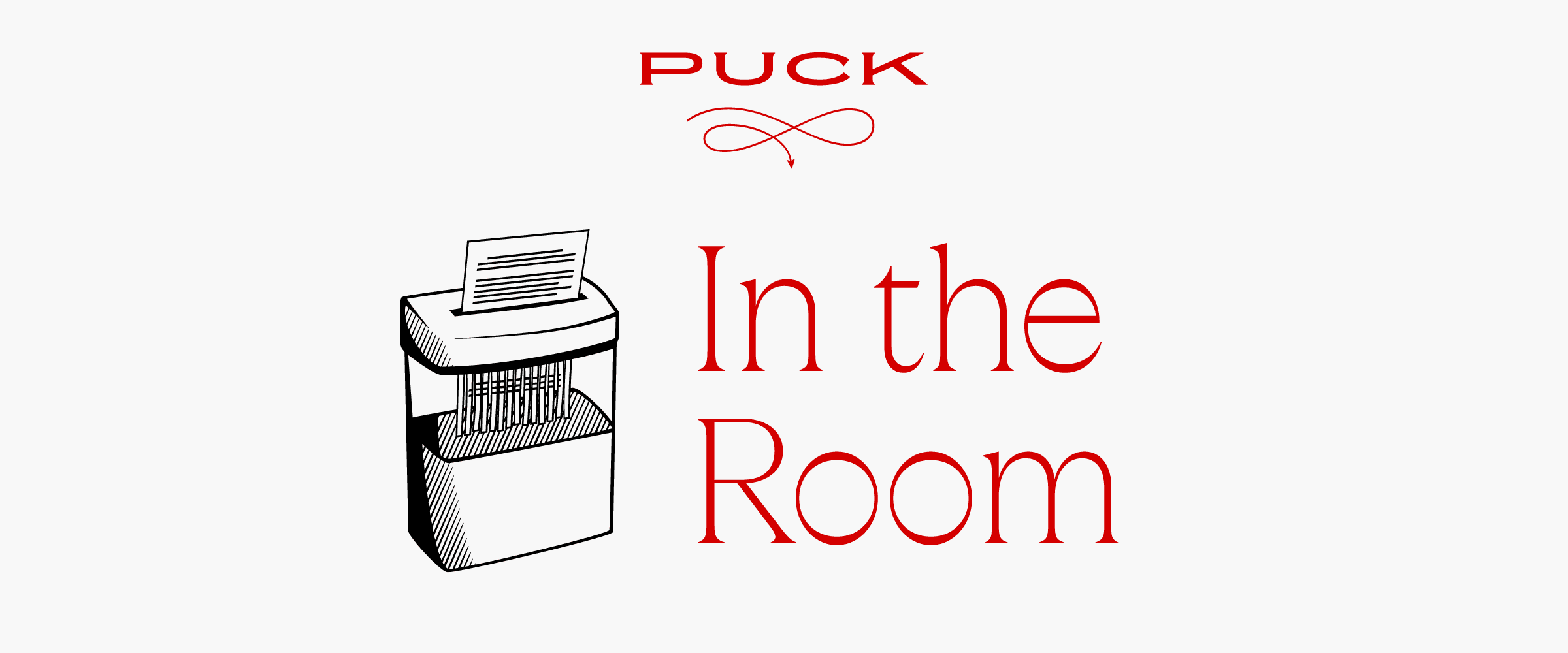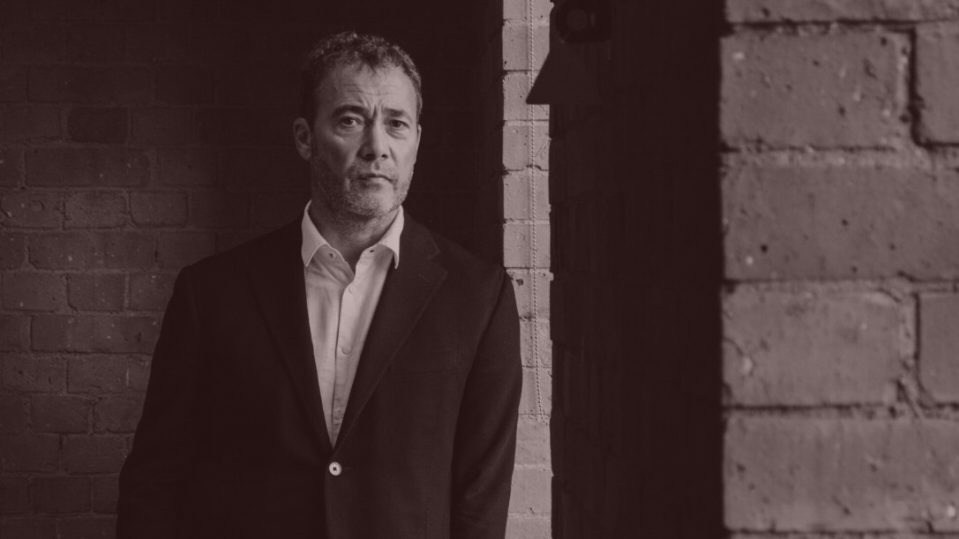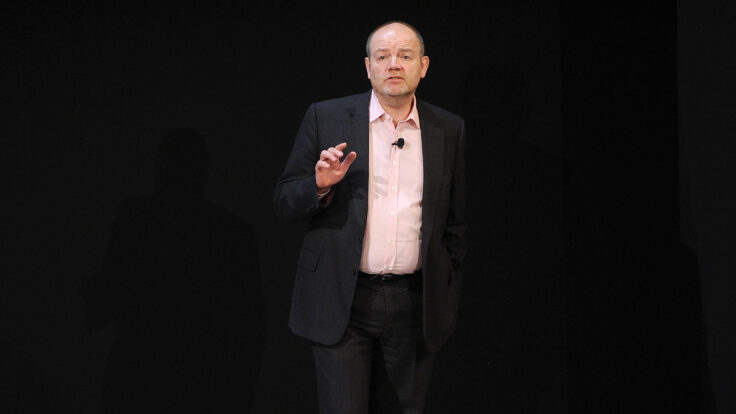 |
|
Greetings from Los Angeles, and happy early Memorial Day to those of you who are already dreaming of getting out of town. Some quick programming notes: I’ll be off on Friday for the holiday, but I’ll be sitting in for my colleague Peter Hamby as guest host of The Powers That Be podcast next week, starting on Tuesday. Listen here. And, of course, I’ll be back in your inbox on Wednesday.
In tonight’s email, a conversation with Washington Post publisher and C.E.O. Will Lewis on the unveiling of his new, multi-tiered plan to fix Jeff Bezos’s beleaguered mediaco. “We’ve let the tanks come onto our lawn,” Lewis told me. “We’ve let people invade our space, and it’s time to push back.”
But first…
🏀 Buzzer beater: The NBA is formalizing written rights contracts with Disney, NBC, and Amazon this week, as my partner John Ourand teased last week. Once those contracts are written, I’m told, Warner Bros. Discovery chief David Zaslav will have five days to try to match the NBC or Amazon offer in “total value”—a complex calculation given differences in distribution (NBC has a broadcast channel, WBD doesn’t, etcetera). In any event, Sports Business Journal suggests that Zaz has three options: “pass on the NBA, drastically overpay for the ‘B’ package”—NBC’s offer is around $2.5 billion, more than double the $1.2 billion Zaz is currently paying—“or take the NBA to court over the definition of a match,” the latter of which isn’t quite in the spirit of partnership. Zaz seems to really want the NBA, but his options for retaining it are exceedingly grim and short-termist.
👀 Kilar the messenger: Speaking of Zaz… In his first interview since leaving the company two years ago, former WarnerMedia C.E.O. Jason Kilar tells the Journal that he doesn’t think WBD will be a stand-alone company in 18 months. Who will they merge with, pray tell? “I think there’s probably two or three companies that have the balance sheet and the regulatory environment to pull it off,” he said. Kilar also warned that the 2024 election will not save cable news: “The election is a discrete period of time and they come and they go,” he explained, stating the obvious. “At the end of the day, … The Wall Street Journal and The New York Times are the absolute proof points of where the world needs to go in terms of journalism, which is to have a robust, scalable business model rooted in digital.”
📉 How low can you go…: CNN drew its lowest primetime demo ratings ever last week, tying the week of Thanksgiving 2023 with an average of just 83,000 viewers in the 25-to-54 demo. The difference here, of course, is that it wasn’t a holiday week.
Yes, I know, the whole industry is in decline, as Professor Kilar pointed out. And, yes, ratings are not the metric by which Mark Thompson measures his company’s success. But in case you needed a reminder of how dire the linear situation is at CNN right now, there you go. In fact, of the 27 weeks that CNN has averaged 100,000 or fewer demo viewers in primetime, 22 have happened since WBD took over the network in April 2022. Just one more headache for Zaz.
And now for the main event, a readout of Will Lewis’s Washington Post resurrection plan…
|
 |
| Will in the World |
| Washington Post C.E.O. Will Lewis finally unveiled his plan to fix Jeff Bezos’s media heirloom—a mix of new subscription tiers, some management realignment, and other uncontroversial ideas. Is this the best he could find in the McKinsey handbook, or is it merely a prelude to the next plan? |
|
|
|
| On Monday, Will Lewis, the effervescent, still-newish publisher and C.E.O. of The Washington Post, called to walk me through his long-awaited plan to restore his paper’s reputation and momentum and “swagger.” Lewis tactfully stated that his objective was to make the Post “the best place in the world to make journalism.” He also conceded that his mandate, articulated by his boss Jeff Bezos, was to return the media company to profitability. “I’ll sleep a lot better when we’re making money,” Lewis told me in his Etonian accent.
Of course, Lewis inherited a company from his predecessor Fred Ryan that, by his account, lost $77 million last year and has endured a staggering 50–plus percent audience drop-off since 2020. Even those statistics may be conservative: I have previously reported that the company had 139 million monthly visitors four years ago, and less than 60 million by the end of last year. And it’s not an engaged audience, either. Fewer than one in five read more than a single article per month, according to my sources, while fewer than one in 500 actually converted to a paying subscription.
Alas, not only did the business retreat under Ryan, but morale plummeted. More than any of its competitors, the Post visibly suffered from a post-Trump admin malaise and full-blown identity crisis that was exacerbated by a talent exodus, an ongoing union battle, and a recent wave of buyouts. Sure, the contrived newspaper wars narrative of the Marty Baron–Dean Baquet era was an exercise in wishful thinking—the Times was always orders of magnitude larger than the Post, and the latter was inevitably going to suffer a post-Covid comedown. But the hangover has been particularly depressing within the institution. In his first months reviewing the business, Lewis told me the pervasive mood at the Post was “mad and sad.”
The company simply wasn’t being run effectively, he said. In an early virtual staff meeting, he asked people whether they felt the organization was collaborative or siloed. One employee wrote the words “siloed A.F.” on a piece of paper and held it up on screen, conveying a widely held sentiment and providing Lewis with an inadvertent lesson in American slang. “We were siloed A.F.!” he told me over the phone. “There was no plan.”
The new plan, which Lewis articulated to staff at a town hall on Wednesday morning, aims to reverse the Post’s fortunes and reassert the paper’s position in what has become an extremely crowded marketplace over the last decade. Nationally, the Post lives in the shadow of the Times and, increasingly, The Wall Street Journal and Bloomberg, too. Inside the Beltway, it has ceded much of its ground to B2B competitors like Politico, Axios, Punchbowl, and so on. “We’ve let the tanks come onto our lawn,” Lewis told me. “We’ve let people invade our space, and it’s time to push back.”
|
|
|
| The Post will hit its budget targets this year, Lewis assured me, presumably on account of the staff reductions and various carrying costs associated with them. It will also set more ambitious targets for the next calendar year, and then start targeting profitability in 2026. To begin that journey, Lewis has conceived of a buffet of workflow improvements and product initiatives that the Post will start to build and scale. The meatiest of these is the introduction of several new subscription offerings, ranging from a flexible, pay-as-you-go spending option for casual consumers to a slew of premium tiers for dedicated readers and professionals, alike. The effort will be spearheaded by a number of new deputies, including chief growth officer Karl Wells and chief strategy officer Suzi Watford—fellow Brits and fellow veterans of News Corp., where Lewis once served as C.E.O. of the Journal.
For core audiences, the Post will introduce three additional subscription tiers: “Plus,” a B2C offering with additional editorial content for superfans; “Pro,” a B2B offering with in-depth policy data and analysis (the Post’s answer to Politico Pro and Axios Pro, essentially) for the K Street and Capitol Hill crowd; and “Membership,” which adds access to exclusive events and forums (think: WSJ C.E.O. Council). For non-core audiences, such as younger news consumers who engage with Post content on social media, the Post will also introduce a pay-as-you-go option to access single articles or work from a specific author. This offering isn’t about netting a few quarters and dimes from passersby, of course; it’s about getting their email addresses and credit cards and putting them in the marketing funnel, with the hope that they’ll subscribe down the line.
Beyond that, there’s a smattering of other initiatives, from new subscription personalization tools to an A.I. bot that fields reader inquiries about, say, climate change. Internally, the Post will abide by three guiding principles—productize the journalism, make customers happy, and make money—and staff will be “empowered,” in Lewis’ telling, to take greater initiative and not await orders from on high. A new team helmed by Kathy Baird, the chief communications officer, will focus on marketing the talent and getting more Post journalists onto the conference circuit.
Will any of this work? Subscription plans come down to testing and execution, so it’s impossible to say at first blush. But it sure seems like Lewis is starting with some table stakes assumptions here—ones he probably didn’t even need to pay a management consultant or research group to surface for him. Clearly, there are superfans and professionals with endless digital wallets who will pay more for a competitive edge, delivered via proprietary data or excellent journalism, or a networking opportunity. And, yes, there should be ways to monetize the Post’s previous efforts to participate in the now-regrettable traffic wars. Indeed, we’re long past the days of pure plays in media—every company, including Netflix, needs to operate as many revenue streams as possible, taking advantage of the infinite cohort clusters that reside within their data lakes. In the meantime, one assumes Lewis’s real plan is to put this arrangement in place and iterate away, and then focus on his next plan, which will double down on the most successful learnings.
Indeed, the larger problem isn’t that the Post is simply “mad and sad.” The company’s editorial has arguably lost its direction and nerve during its year or so of magical thinking. Will millions more people subscribe to a product that offers similar, if less differentiated, political and policy-driven journalism as the Times? Will they pay for an opinion section that does the same? On an anecdotal level, when was the last time someone forwarded you a Post piece that you felt compelled to read?
Lewis says all the right things about executive editor Sally Buzbee and opinion editor David Shipley, whom he calls “co-pilots” in his mission. But the business fortunes of the Post are unlikely to change until the editorial content is more fully differentiated and reader-focused—and in new markets and sectors and spaces (health, technology, whatever) where the company has an uneven record of homegrown success. Perhaps the data collected from the tripartite subscription offering will yield some clues about what Lewis could acquire with the Bezos dowry. After all, the Times Company paradigm—invest in technology, and then go on an M&A spree—seems like the most viable path forward. Perhaps Jessica Lessin, Wells’ old boss at The Information, has a phone call coming in her future. (I doubt it, though, she’s never seemed like a seller…)
|
|
|
| The good news, at least for now, is that Lewis is well-liked in the wolf den, and his presentation was a veritable elixir for the newsrooms’ collective heart palpitations. That’s not altogether surprising, either. He has already done much to endear himself to staff: setting up his desk in the middle of the sixth-floor newsroom (yes, optics matter), engaging journalists’ buy-in by asking them to both identify problems (known internally as the “say it” phase) and solve them (the “fix it” phase), generally ingratiating himself with his affable Hugh Grant charm, and tasking his comms director with the fishing expedition of getting his top people on to the green room circuit. Moreover, Wednesday’s reveal (the “build it” phase) was at least a plan—the good folks at CNN are still waiting for such a coherent articulation from Mark Thompson—and it certainly sounds like a step in the right direction.
In fact, Lewis is honest about the fact that this plan is really only a bridge to the next one. His first six months in the job, it seems, were dominated by his own version of the “say it” phase, and the next half-year or so will be focused on fixing the Post via this new pricing structure. Then it will be on to the “scale it” era. What happens between now and then is where the rubber will meet the road. It’s hard to imagine that Lewis has endless patience for an unprofitable mad and sad era at the Post. And Bezos probably doesn’t, either.
|
|
|
|
| FOUR STORIES WE’RE TALKING ABOUT |
|
|
|

|
 |
|
|
|
Need help? Review our FAQs
page or contact
us for assistance. For brand partnerships, email ads@puck.news.
|
|
You received this email because you signed up to receive emails from Puck, or as part of your Puck account associated with . To stop receiving this newsletter and/or manage all your email preferences, click here.
|
|
Puck is published by Heat Media LLC. 227 W 17th St New York, NY 10011.
|
|
|
|







